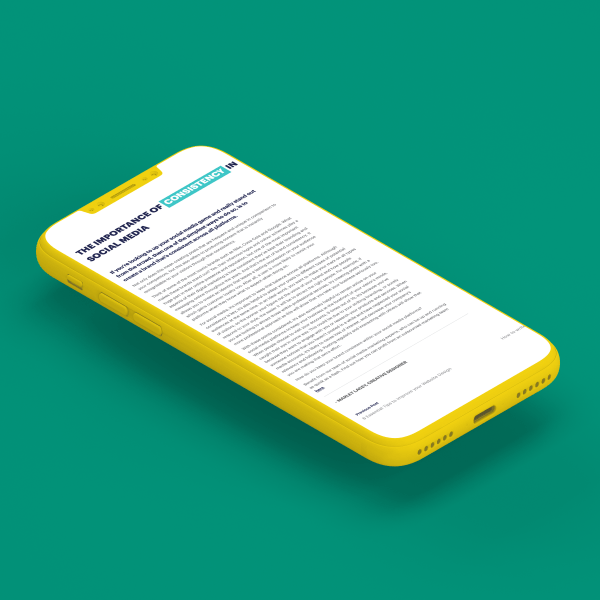Your marketing team is hitting targets, MQLs are flowing in, and engagement metrics look fantastic. On paper, everything seems to be working.
So why isn’t sales closing more deals?
If your MQLs keep vanishing into the abyss or getting rejected by sales, something isn’t adding up. And it’s not just a sales problem or a marketing issue, it’s a process problem.
Let’s break down why your MQLs aren’t converting and, more importantly, how to fix it.
-
Your MQL Definition is Too Broad
The Problem:
If your MQL criteria rely on vanity metrics, like email opens, content downloads, or generic form fills, you’re setting your sales team up for failure. Not all engagement signals genuine buying intent.
A CMO downloading an eBook? That’s interesting. An intern doing research for a university project? Not so much.
If sales is pushing back on your leads, it’s likely because they don’t see real intent or a good fit.
The Fix:
✔ Refine your MQL criteria. Focus on behaviours that indicate intent, such as:
- Repeated engagement with high-intent pages (pricing, case studies, webinars).
- Firmographic fit (Are they in your ICP? Right industry, company size, job title?).
- Buying signals (Are they actively searching, or just browsing?).
✔ Align your definition with sales. If sales doesn’t believe in the leads, they won’t prioritise them. Get input from both teams to define what a true MQL looks like.
-
Your Lead Nurture is Weak (or Non-Existent)
The Problem:
A lead downloads one whitepaper and suddenly, they’re an MQL? Sales reaches out, and the prospect has no idea who you are.
Most MQLs aren’t ready to buy straight away. If you’re pushing them to sales without warming them up, you’re wasting good leads.
The Fix:
✔ Introduce a proper nurture strategy. Instead of handing MQLs over immediately, put them into structured nurture sequences:
- Email workflows: Send helpful content rather than immediate sales pitches.
- Retargeting ads: Keep them engaged with content relevant to their behaviour.
- Multi-channel engagement: LinkedIn interactions, webinars, and personalised video content can help.
✔ Use lead scoring to measure intent. One interaction doesn’t equal buying intent. Track how leads engage over time before passing them to sales.
-
Sales Follow-Up is Too Slow (or Non-Existent)
The Problem:
Even if your MQLs are high-quality, they’ll go cold fast if sales takes too long to follow up.
🚨 Here’s a sobering stat: 78% of customers buy from the first company that responds 1. If your sales team is taking days to act, you’re handing deals to your competitors.
The Fix:
✔ Set response time SLAs. Work with sales to agree on:
- How quickly leads should be contacted (ideally within minutes or hours, not days).
- How many follow-ups should happen (converting takes persistence).
- The best outreach mix (calls, emails, LinkedIn messages).
✔ Use automation to trigger instant alerts. No more waiting for a report, notify sales the moment an MQL is ready.
✔ Monitor and optimise response rates. If follow-ups are inconsistent or slow, find the issue and fix it.
-
There’s a Disconnect Between Sales & Marketing
The Problem:
If sales and marketing aren’t working together, your funnel will always leak.
Some classic red flags: ❌ Sales doesn’t trust marketing’s leads. ❌ Marketing blames sales for poor follow-up. ❌ No feedback loop – marketing doesn’t know which MQLs are actually converting.
Without proper alignment, both teams end up working in silos, leaving revenue on the table.
The Fix:
✔ Hold regular sales-marketing syncs. Discuss lead quality, sales feedback, and performance insights. Make it a conversation, not just a one-way update.
✔ Give sales visibility into lead activity. If sales can see what content a lead has engaged with, they can tailor outreach accordingly.
✔ Track shared success metrics. Move beyond MQL counts, focus on pipeline contribution, SQL conversion rates, and revenue impact.
-
Your Funnel is Leaking (and You Haven’t Diagnosed It Yet)
The Problem:
If MQLs are getting lost between marketing and sales, it’s time to map out the funnel and find the gaps.
Ask yourself:
🔍 Where are MQLs dropping off?
🔍 Are they engaging but not booking meetings?
🔍 Are meetings happening but not progressing?
You can’t fix what you’re not measuring.
The Fix:
✔ Audit your MQL-to-SQL pipeline. Look at data from the past 6–12 months to identify the biggest drop-off points.
✔ A/B test lead handoff strategies. Experiment with different follow-up cadences, outreach methods, and nurture sequences to find what works best.
✔ Close the feedback loop. Sales should report why leads aren’t converting. If “bad fit” is a common complaint, marketing needs to refine targeting. If “not ready” is the issue, the nurture process needs work.
Fix Your Funnel, Fix Your Revenue
If your MQLs aren’t converting, it’s not just a sales issue or a marketing issue, it’s a broken process.
By tightening up your lead definition, improving nurture sequences, speeding up follow-ups, and strengthening sales-marketing alignment, you’ll start closing more deals and stop wasting pipeline.
🚀 Need help optimising your funnel? Let’s talk, ResourceiT helps IT businesses improve marketing-sales alignment for better conversions and revenue growth.





